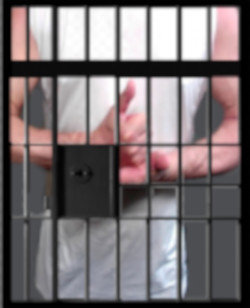By Supporter Contributor Rebecca Gray
It is not an overstatement, and may seem more than obvious to most, that the War on Drugs is directly connected to the problem of prison overcrowding in this country. It would seem logical then, that those convicted of drug-related crimes could get some help for any substance abuse problems they are facing, or at least, find some respite from the temptation of drugs while incarcerated.
Unfortunately, this does not seem to be the case in many of our country’s regional penal systems. According to an article in The Bangor Daily News in November 2012, 64 (of a total 850) inmates had been charged with drug crimes in 2011-12. And in another example; Richard Pillajo, a wellness officer at a Florida state prison was arrested for plans to smuggle marijuana, cocaine and hydrocodone pills into the prison for a $2,500 payoff. In many of the larger prison systems, a combination of inmate ingenuity, complicit visitors, and corrupt officials has maintained high levels of drug abuse on the inside, despite efforts to reduce the problem.
Packages containing illicit substances are sometimes launched over barriers via paint-ball guns, and homemade “potato guns.” The drugs are often contained in unlikely parcels such as dead birds, which are slow to draw unwanted attention. Other oft used methods include passing drugs through seemingly passionate kisses from visiting wives and girlfriends, and hiding substances within legal documents that aren’t subjected to the same scrutiny as regular correspondence. Some packages are even passed along by prisoners working on road crews and other projects outside prisons.
As might be expected, the drug trade inside prison walls is even more lucrative than on the outside, where the contraband is more accessible. In a recent Washington Times article, Hawaii’s Deputy Director of Corrections Tommy Johnson was quoted as saying the going price of heroin behind bars can be as much as 10 times or more than the same product would sell for on the street.
Prison drug trade is often controlled by gangs, and it is the rich profit margin that attracts them to the practice of drug trafficking. What appear to be gang related riots are in fact drug deals gone bad. In the same Times article, Mike Ruff, a California correction department special agent states that the number-one cause of prison violence is gang-related drug activity.
Some states, such as Pennsylvania, have been able to curtail the problem more effectively than others. Through proven practices (i.e. drug dogs and X-ray machines in the mailroom), as well as an increase In the frequency of drug testing and corresponding punishments; the state has managed to reduce the 1995 rate of 6% positive drug testing among inmates to what is now considered a negligible amount.
Success has also been attributed to stepping up searches of both inmates and employees, with violators losing privileges or facing charges. Eric Kriss, the spokesperson for the New York State Department of Corrections has said that liberal visiting policies go hand-in hand with drug smuggling. Unfortunately, completely removing visitation isn’t a cure-all answer. Visits sustain inmates’ relationships with friends and family members, so they have a greater chance of success when they are finally released from the prison system.
Despite increased efforts to reduce the influx of drugs into the penal system, and success stories tied to the new practices; many officials recognize their work is being thwarted by problems elsewhere in the system. Most county and local jails do not follow the same strict standards set at state levels. And since many inmates who have successfully undergone treatment programs while in prison are released into community correction programs with less rigorous standards; relapse is frequent.
This guest post is contributed by Rebecca Gray, who writes about criminal background check for Backgroundchecks.org. She welcomes your comments at her email id: GrayRebecca14@gmail.com.










